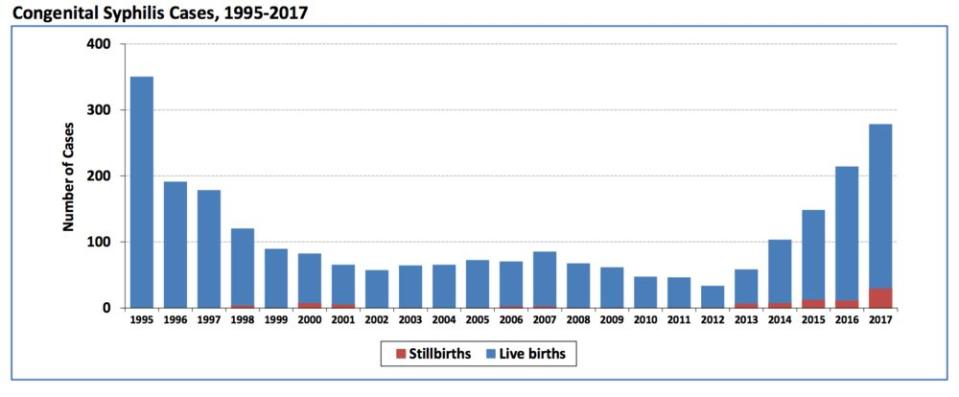STD Cases Just Reached a Record High in California. Here's What You Need to Know
A new report finds that the number of reported sexually transmitted disease (STD) cases in California reached a record high in 2017—and public health officials are particularly concerned about a sharp rise in stillbirths related to congenital syphilis.
“More than 300,000 cases of chlamydia, gonorrhea, and early syphilis were reported: a 45% increase compared to five years ago,” wrote the authors.
The findings from the California Department of Public Health (CDPH) show significant spikes in common STDs like gonorrhea and chlamydia between 2000 and 2017 (chlamydia rates rose 9% compared to 2016, reaching an all-time high among both males and females, while gonorrhea infections rose 16% from 2016). But rates of more serious infections like syphilis have increased even more, especially among men, including a 20% overall increase from 2016.
Subscribe to Brainstorm Health Daily, our newsletter about the most exciting health innovations.
That latter stat is particularly troubling to public health officials given the long-term dangers of untreated syphilis, which can cause brain damage. And the infection can also spread from mother to child, resulting in a higher number of stillbirths. Babies who survive may endure severe illness and developmental defects.
CDPH noted that 2017 was the “fifth consecutive year for increases in the number of infants born with congenital syphilis,” and that there were 278 congenital syphilis cases, including 30 stillbirths, in California last year.

Health experts have a number of theories as to why all these STDs are on the rise. For one, California residents may not be getting regular screenings. That could be a lingering effect of the 2008 financial crisis, when the state budget slashed public health funding. A lack of access to free public clinics in some parts of California could be driving infections, UCLA professor of medicine Dr. Jeffrey Klausner posits. STDs may also be more prevalent among vulnerable communities with low incomes, drug addiction problems, or mental illness.
“STDs are preventable by consistently using condoms, and many STDs can be cured with antibiotics,” said CDPH Director Dr. Karen Smith in a statement. “Regular testing and treatment are very important for people who are sexually active, even for people who have no symptoms. Most people infected with an STD do not know it.”
